Pineapple Growing Stages (thegardenation)
Embark on a tropical journey as we delve into the captivating world of the pineapple growing stages. Originating from South America but cherished worldwide, the pineapple (Ananas comosus) stands as a testament to the beauty of tropical flora. In this comprehensive guide, we will explore the six distinctive stages of pineapple growth, providing insights, tips, and expert advice for cultivating this tropical delicacy in your own home.
Conditions for Growing Pineapples

Pineapples have a strong tropical affinity, a vestige of their origins in the rainforests and grasslands of South America. Unraveling their history reveals membership in the bromeliad family, sharing key traits with popular ornamental houseplants. While commercial pineapple production occurs in tropical regions globally, certain conditions make it possible to grow pineapples at home too such as we have provided information in Romaine Lettuce Growing Stages
Pineapples thrive in warmth, needing daytime temperatures of 80-85°F to imitate their native climes. Bright but indirect sunlight also supports growth, with at least 5-6 daily hours of sun exposure. Moderate watering satisfies moisture needs, allowing the soil to partly dry out between waterings. Well-draining soil amended with sand or perlite prevents soggy roots. For containers, use a quality potting mix with added orchid bark. Ground planting benefits from raised beds of sandy loam to improve drainage.
When nurturing pineapple plants, space them 2-3 feet apart for adequate room when mature. Feed them monthly with a balanced 10-10-10 fertilizer, and add micronutrient supplements like Epsom salts and chelated iron for lush leaves.
Pineapple Growth Rate and Lifespan
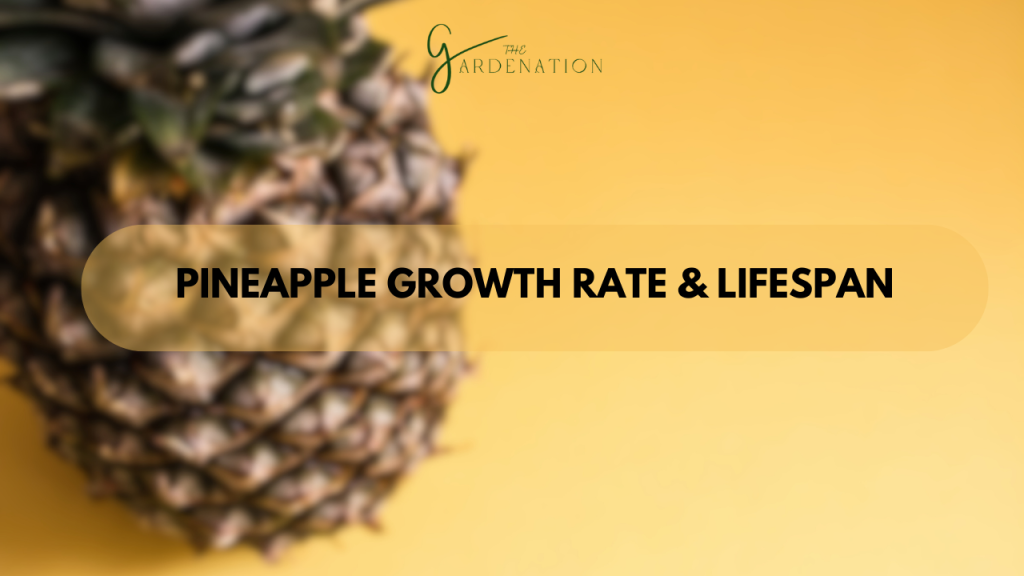
Pineapples are moderately quick-growing when young, producing new leaves every few weeks under optimal conditions. Their growth rate depends largely on warmth and ample moisture. With consistent care, they reach maturity within 2 years.
The pineapple life cycle begins with seed germination, spanning up to eight weeks. The seedling stage progresses into vigorous vegetative growth lasting around 90 days. Flowering follows in another 60-80 days before pollination and fruit development occur over 5-6 months. Entire life spans an average 18-36 months from seed to fruit harvest. Genetics play a key role too – modern cultivars with higher sugar contents often have shortened life cycles.
Six Stages of Pineapple Growth
1. Seed Germination
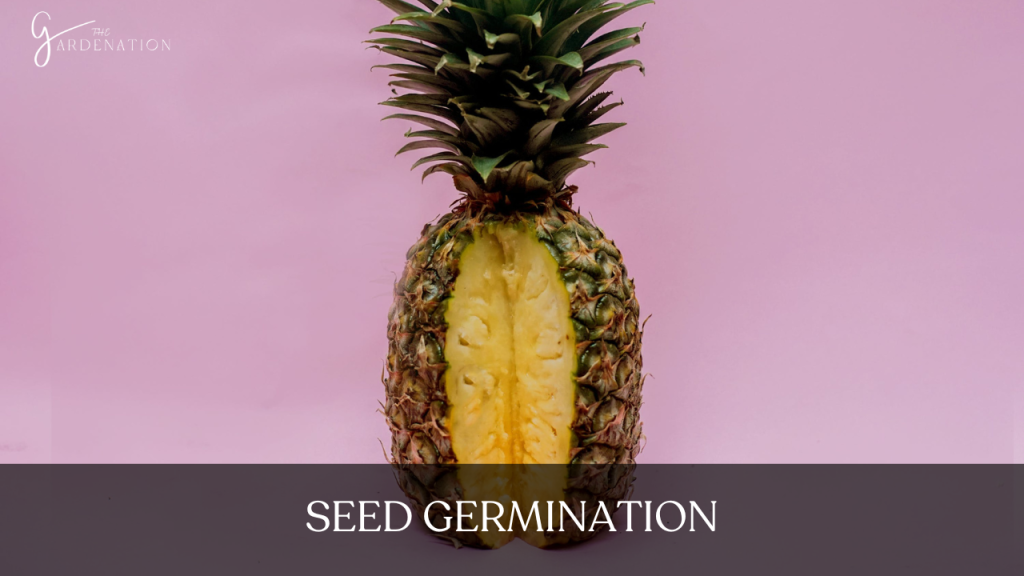
Pineapple seeds exhibit epigeal germination. The seed coat first softens and splits open before the emerging radicle anchors into the soil. Next, the hypocotyl hoists up the cotyledons above ground. Germination rates depend heavily on warm temperatures between 70-90°F and constant moisture bury. You can discover 13 Varieties Of Black Pumpkins here.
Under optimal conditions, pineapple seeds show primary signs of germination in 3-4 weeks when kept consistently warm and moist. Root and shoot growth accelerates afterwards as the first true leaves form.
2. Seedling Stage
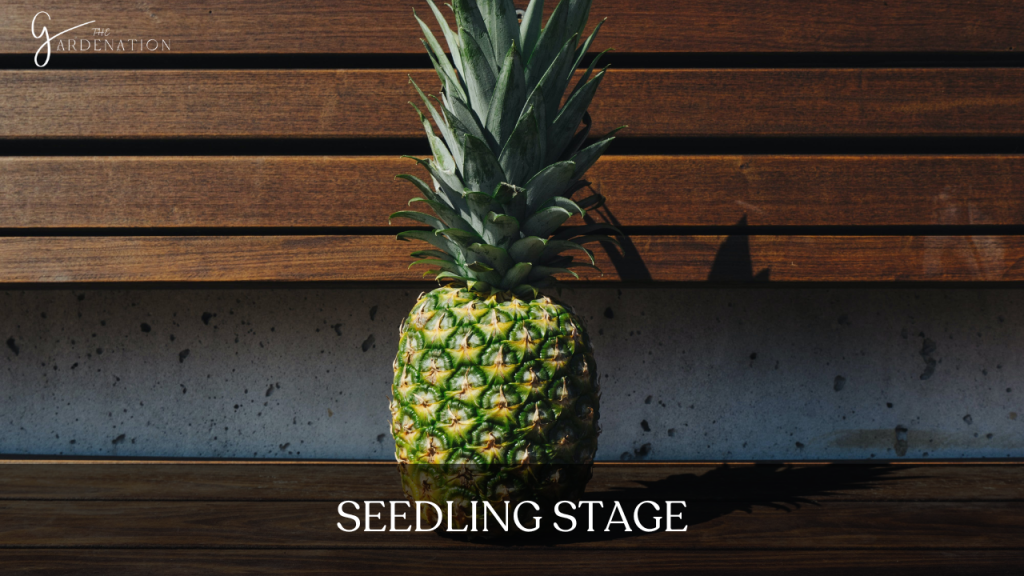
Pineapple seedlings resemble miniature versions of the adult plant. Their sharp, thick leaves arrange in a circular rosette pattern comprising the early foliage. The stem shortens as leaves push closely together.
During this stage lasting approximately 60 days, seedlings prioritize root growth and nutrient accumulation within developing foliage. Hardening off and consistent moisture are vital for ensuring seedlings transition smoothly into maturity.
If you want to know more about us you can visit: Jalapeño Growth Stages
3. Vegetative Growth
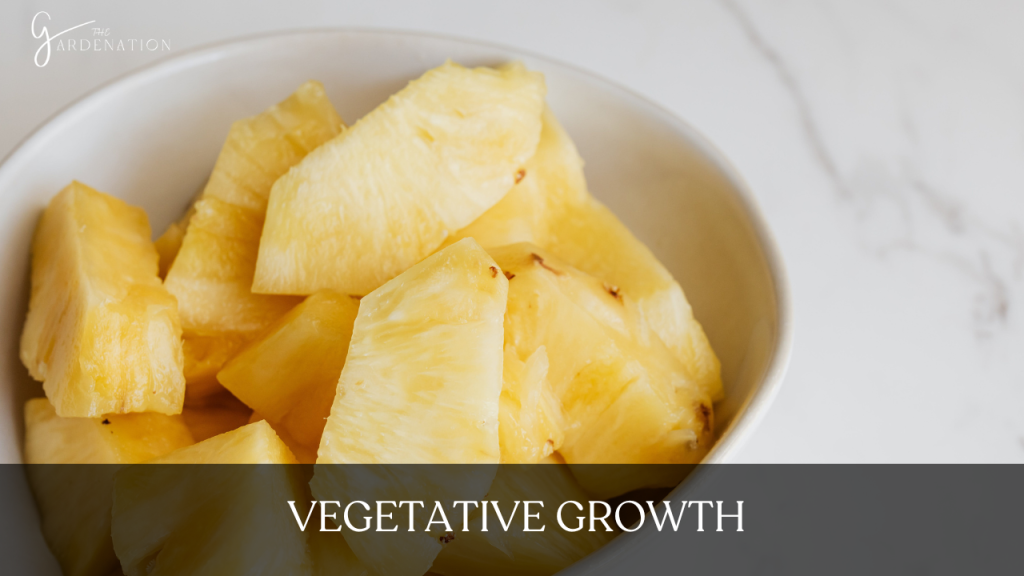
The 90 days after seedling establishment mark a period of dynamic change. Primary roots rapidly expand and branch into networks of thick adventitious roots to anchor the increasingly top-heavy plant. The rosette also expands as new blue-green leaves unfurl, with lower leaves gradually yellowing and dropping off.
A pivotal milestone involves the formation of ratoons or suckers – clonal plantlets budding from the mother plant.I try allowing 1-2 suckers to develop and amplify future yields. I remove excess suckers to conserve the plant’s energy.
4. Flowering in Pineapple Growing Stages
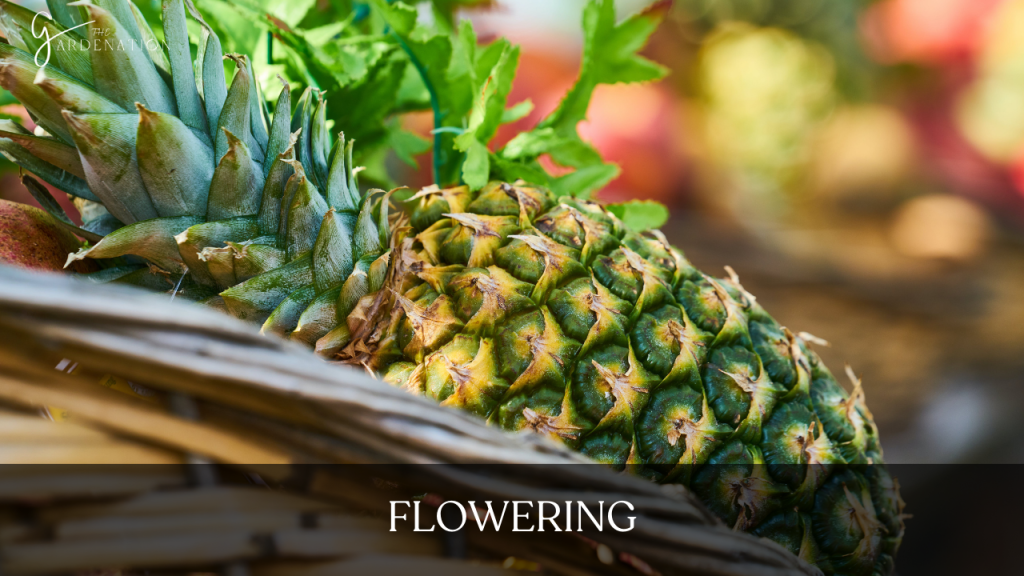
As pineapples enter maturity at around 18 months, a transition from vegetative to reproductive growth occurs. Photoperiod and temperature triggers prompt the surge of hormones inducing flower formation.
The pineapple inflorescence evolves from the apical meristem, initially peeking from the center as purplish buds. Over 2-3 months, these swell into a compact, cone-shaped flower head comprising 100-200 tiny florets.
5. Pollination
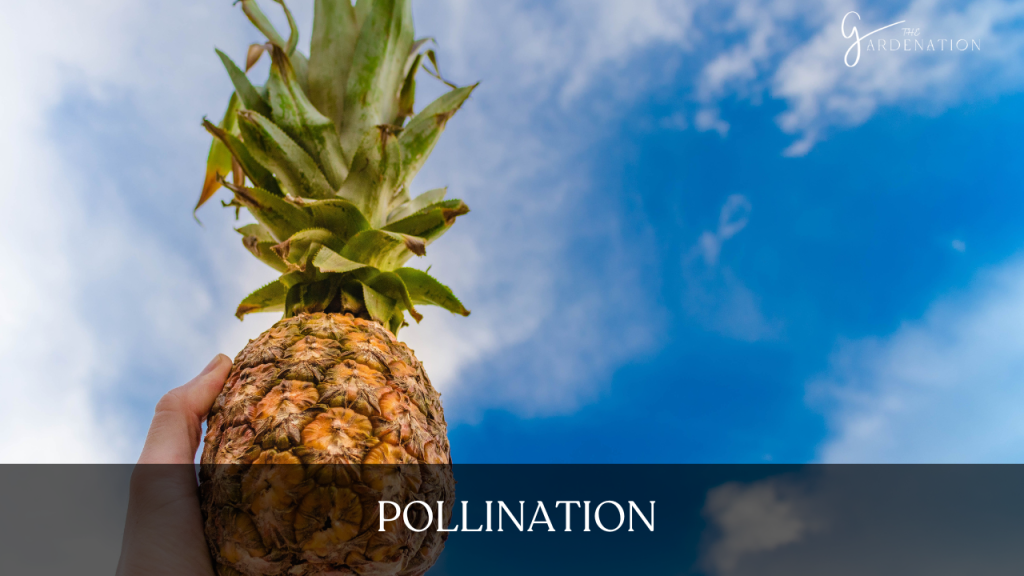
Pineapples possess a unique fusion of 100-200 flowers into one inflorescence, benefiting from cross-pollination between different cultivars. In the tropics, hummingbirds, bees, ants and bats transfer grainy yellow pollen between flowers.
Some modern varieties exhibit parthenocarpic tendencies, producing seedless fruits without pollination. However, cross-pollination raises fruit quality and yield.
Pineapples are also self-sterile, possessing mechanisms inhibiting self-pollination. This makes interplanting different cultivars vital for fruit production. As flowering synchronizes among proximal plants, chances of successful pollination rise.
6. Fruit Development
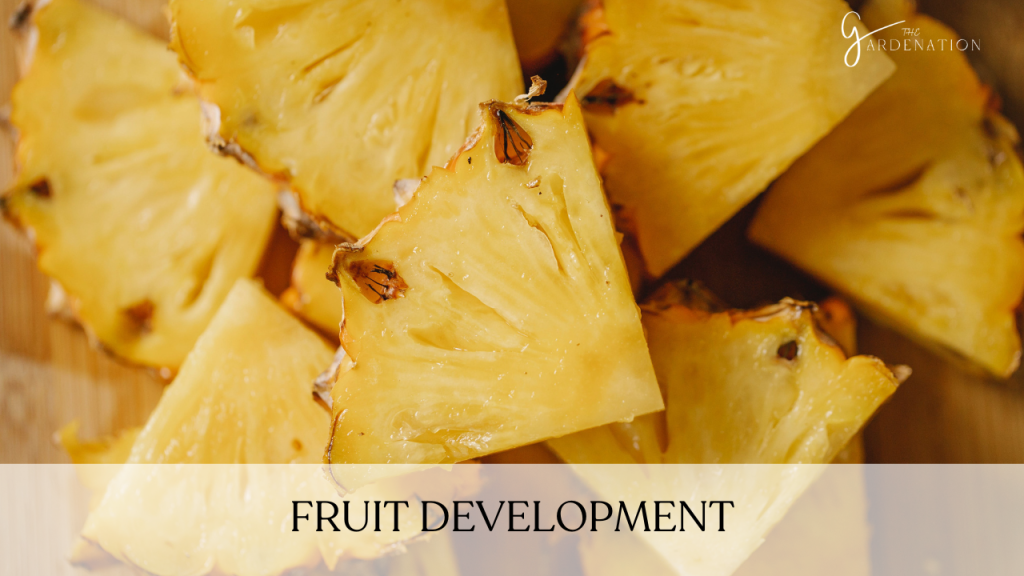
Pollination inaugurates the final stage as fertilized ovaries swell into berries, coalescing around the central stem into a compound fruit. Over 165-185 days, the skin, eyes, and flesh are engrossed with vitamins, enzymes, and sugars.
Gradual color change from green to golden-yellow indicates ripening. A ripe pineapple also exudes a sweet, tropical fragrance when thumped near the base. The fruit can be picked when 1-2 bottom eyes start to pop. At this mature stage, the crown topping the fruit allows new growth for ratoon harvests.
Harvesting Pineapples
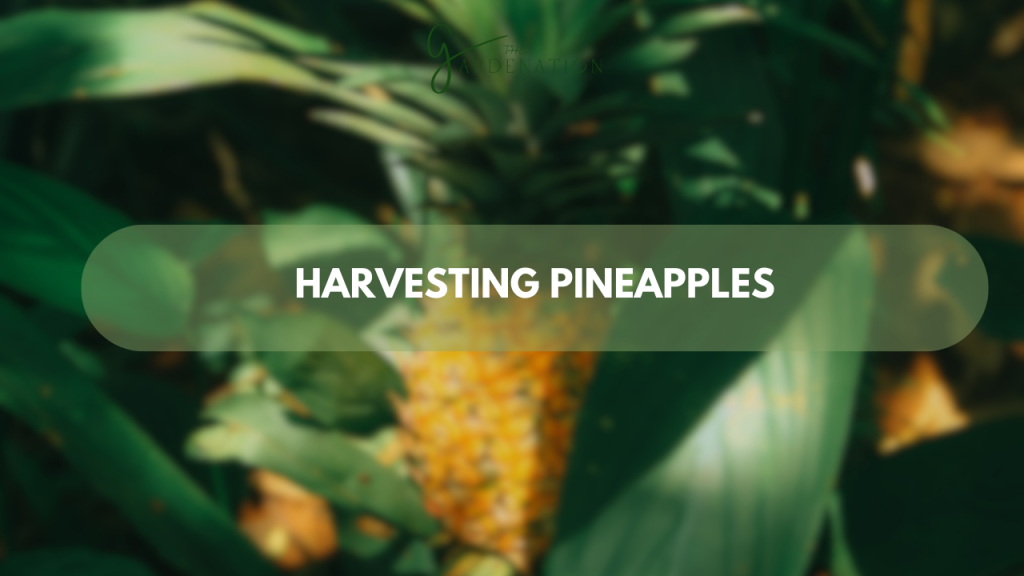
Determining pineapple ripeness requires some finesse. I focus on color, smell, crown rise, and sound. Golden yellow skin signifies peak ripeness, while greenish tinged mean more time is needed. Sweet, tropical aromas signal maturity versus dull scents.
The crown’s slight lift indicates natural separation from the plant. Also I try thumping near the base that elicit a hollow resonance versus dull thuds.I use a sharp knife to harvest, slicing the fruit cleanly off the stem above leaf bases without damaging plant tissues.
I sometimes consume immediately or store stem-side down at 55-58°F for 1-4 weeks. Refrigeration prolongs shelf life and preserves the fruit’s flavor and texture.
Speedy Pineapple Growth
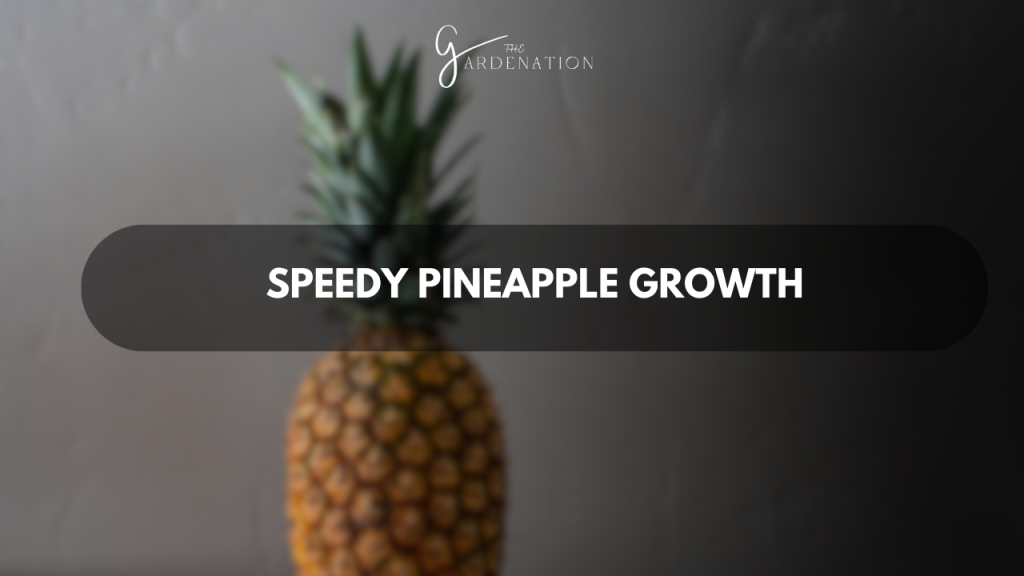
While eager growers envision plucking juicy fruits within months, reality differs. Pineapples reach maturity and flower in 18 months on average with ideal care. Rushing growth risks deficiencies and disease. Proven strategies like consistent warmth, sunlight, moisture and micronutrients simply optimize natural timeframes.
Pineapples in Season
In commercial orchards, pineapple harvests peak from March through June and again from September to December when ample sunlight and rain optimize yields and flavor. However, modern transport enables year-round availability in stores, often from different hemispheres. For home growers, indoor supplements can coax off-season fruits.
Fruitful Yields
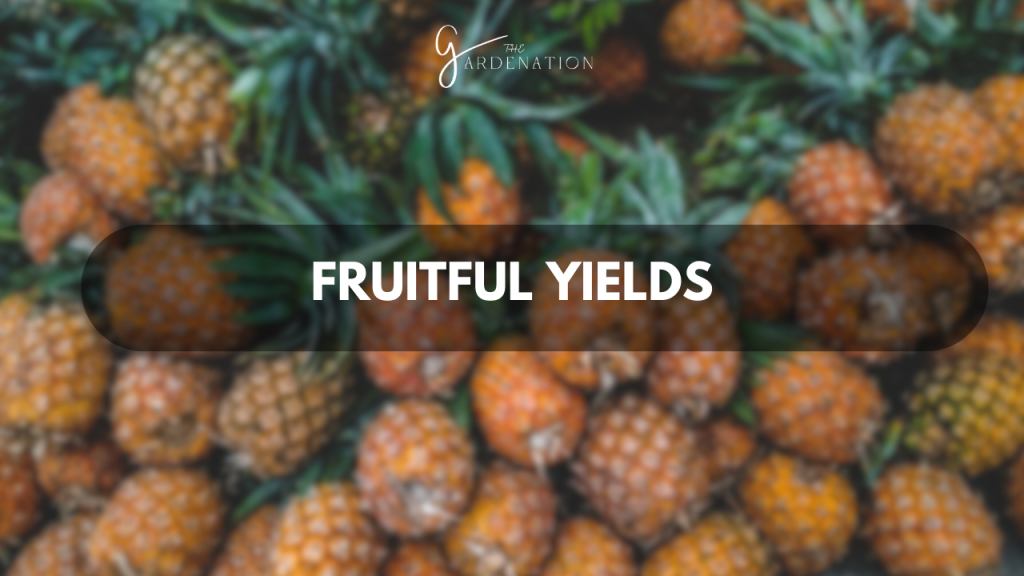
Mature potted pineapple plants generally yield one large fruit alongside a few smaller suckers for ratooning. Several ratoon crops are possible; though shrinking in size, these extras offset the long wait for primary fruits.
In tropical regions, field-grown plants produce multiple large fruits – even 20-50 per plant annually with ideal soil fertility and moisture. Productivity depends largely on genetics, crop age, growing conditions and fruit size preferences.
Frequently Asked Questions
How fast do pineapple plants grow?
Pineapples are not fast growing plants. They take around 18-36 months to reach maturity and produce fruits. Ideal conditions like warmth and proper care simply optimize this natural timeline.
What’s the fastest way to grow pineapples?
Patience triumphs over haste with pineapples. Rushing growth by overfeeding or repotting too early often backfires. Maintaining optimal temperature, light, moisture and using the right soil generate the best growth rates without compromising plant health.
Should I grow pineapples in winter or summer?
Pineapple plants thrive in summer’s heat and peak in fruit production when sunlight hours are long. Supplemental heating and lighting can coax winter fruits indoors. Outdoor winter crops are challenging due to most pineapples’ frost intolerance.
When will my pineapple be perfectly ripe?
Peak ripeness for pineapples aligns with summer-fall harvests in commercial orchards when sunshine and rain inject the most sweetness. For indoor plants, I monitor color, aroma and crown rise to catch that perfect window of flavor.
How many pineapples can I harvest from one plant?
Typically, one large fruit forms per season alongside smaller suckers for ratooning further crops. Under ideal tropical conditions, exceptionally fertile soil and moisture can generate over 50 fruits annually per plant! Potted plants, however, yield less due to space constraints.
Should I remove the suckers from my plant?
Keeping 1-2 suckers benefits future yields via ratooning. But excess suckers sap energy from the main plant, hence thinning judiciously aids the health and productivity of pineapples.
Conclusion
As I conclude my journey through the six stages of pineapple growth, you are now equipped with the knowledge and expertise to cultivate this tropical marvel in the comfort of your home. From seed germination to the sweet reward of a ripe pineapple, this guide empowers you to become a skilled caretaker for this ornate fruit.
You now understand the intricate dance of conditions, time and developmental milestones involved in rearing a pineapple plant. The tropical origins, family ties, climatic preferences and growth habits hold no more mysteries.
Neither do the timeframes and triggers guiding transitions from seedling to maturity and fruiting. Best practices for nurturing healthy growth, gauging ripeness and harvesting bountiful yields are also at your fingertips.
Armed with this comprehensive insight into the pineapple’s biological rhythms and horticultural needs, you can provide the warmth, humidity, sunlight, moisture and care in perfect harmony. As your plant flourishes through vegetative expansion to the first crowning inflorescence, the wonder of seeing such an unconventional fruit emerge in your own living space is sure to delight.
With some attention and patience as your tools, those golden crowns can adorn your tables. The sweet tropical fragrance and flavor will transport your senses to sultry orchards afar. And as you share this homegrown delight with friends, the joy and pride of nurturing nature’s bounty from soil to fruit will be your sweetest reward.
So let your newfound pineapple passion set forth a fresh gardening adventure. Allow the vibrant spirit of the tropics to flourish under your care, one leaf, shoot and fruit at a time!

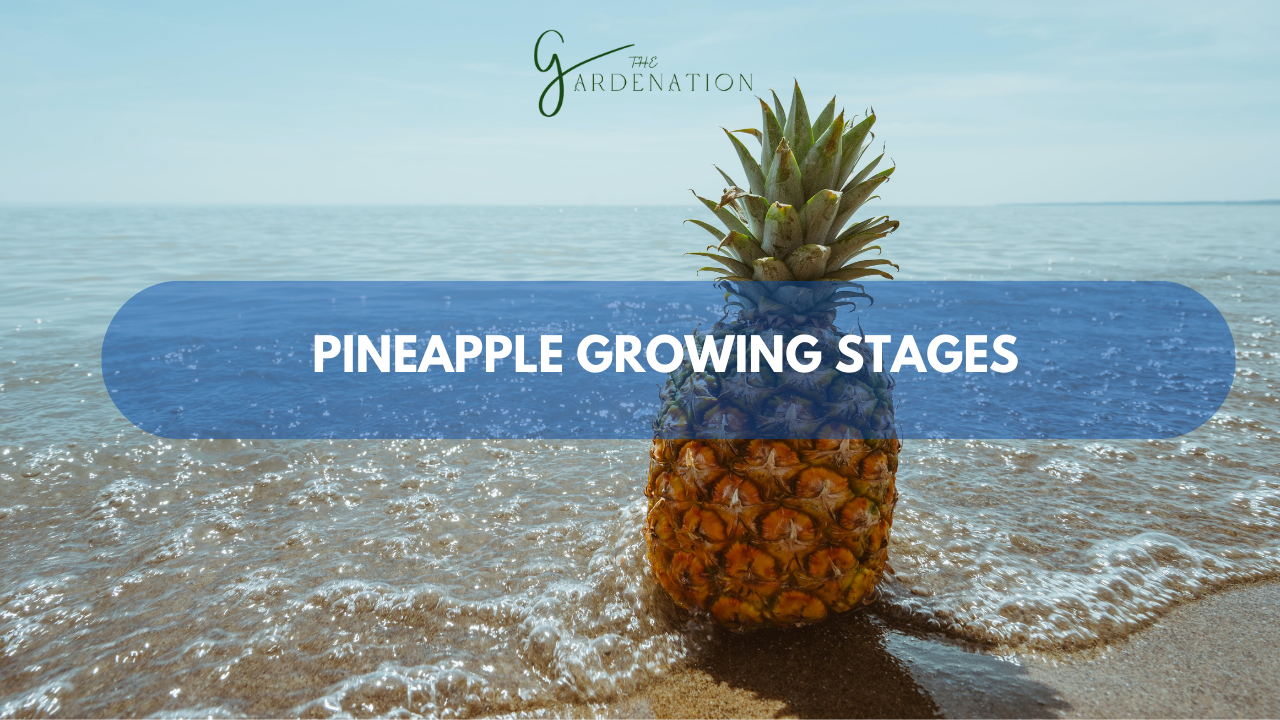
2 Comments